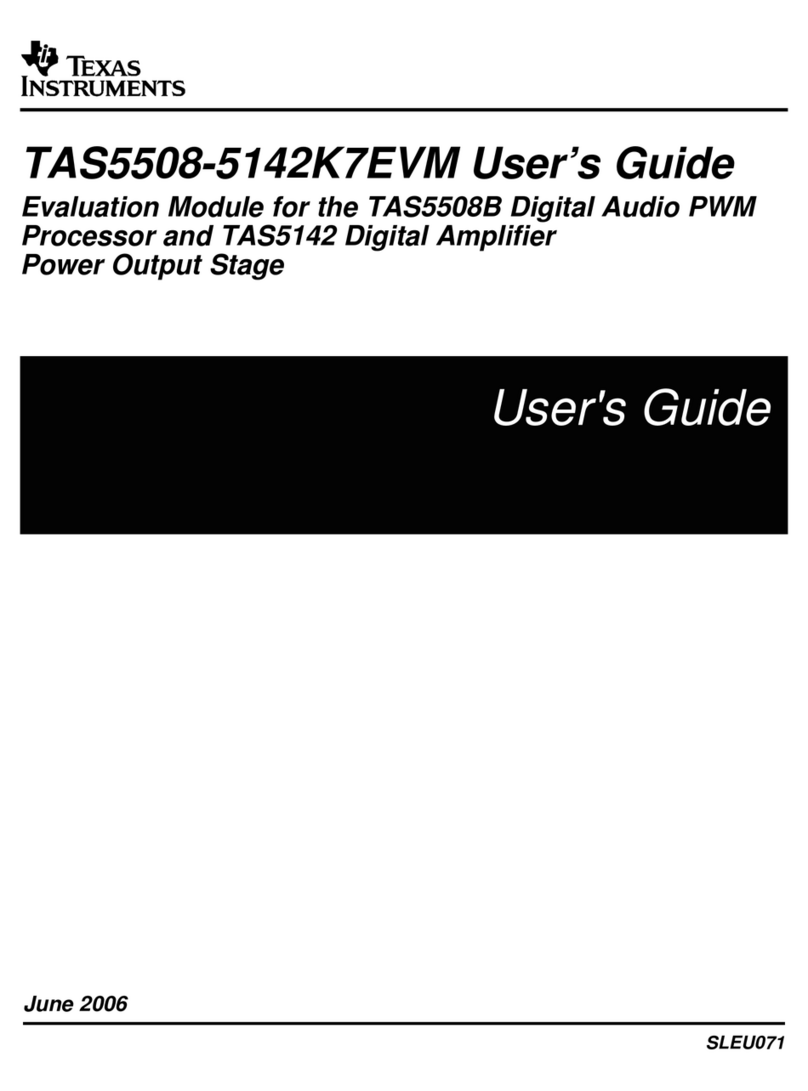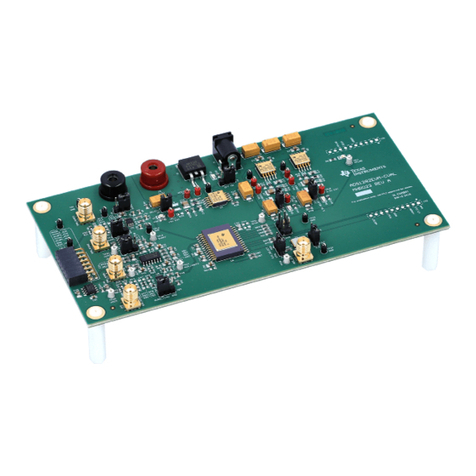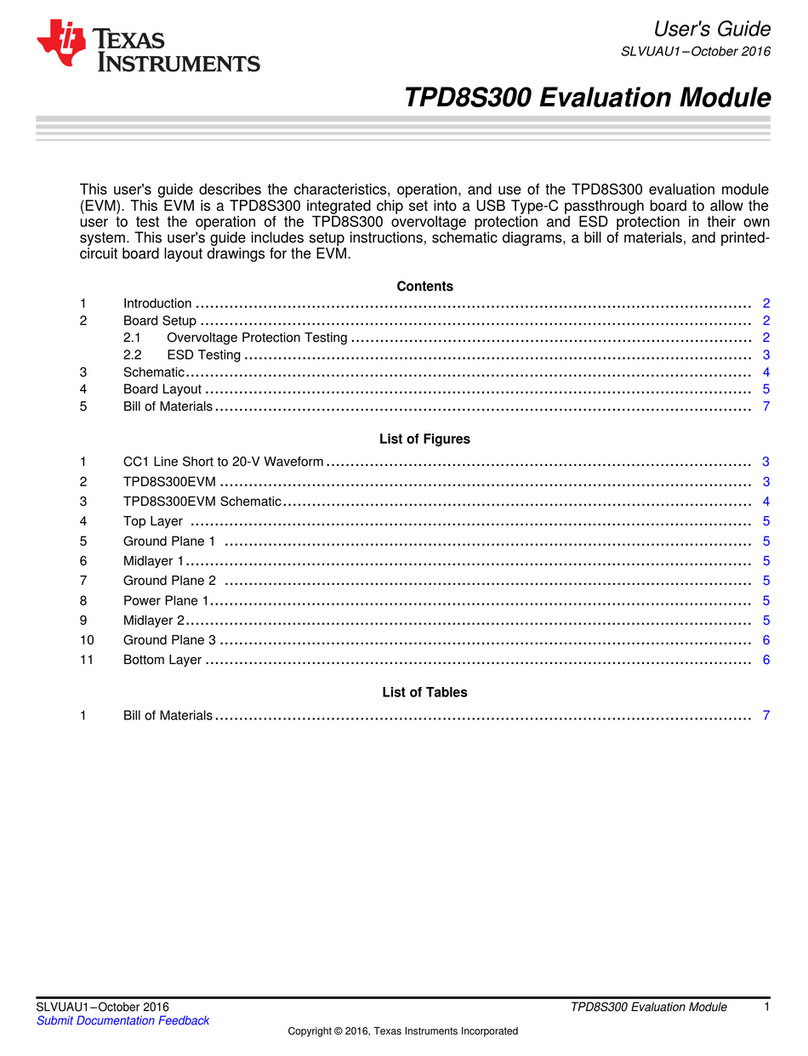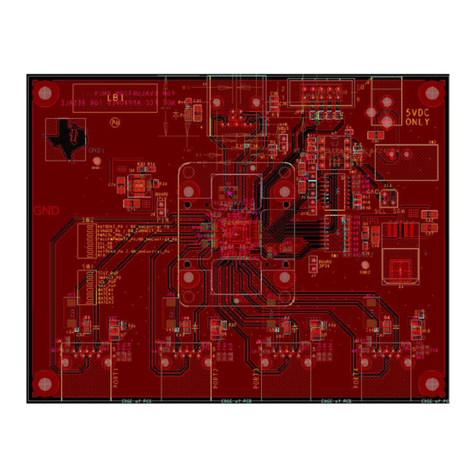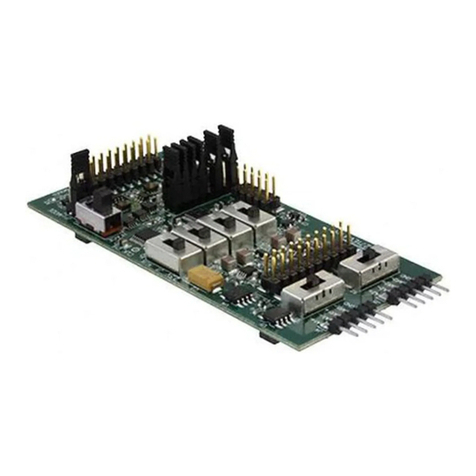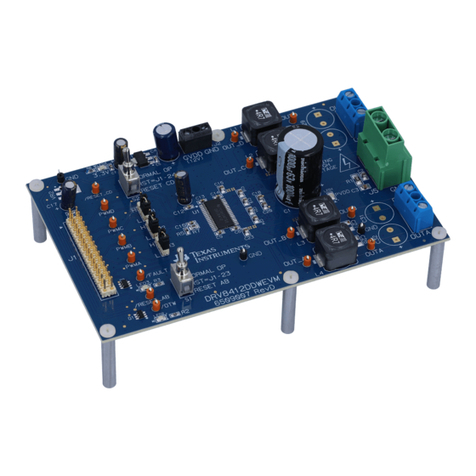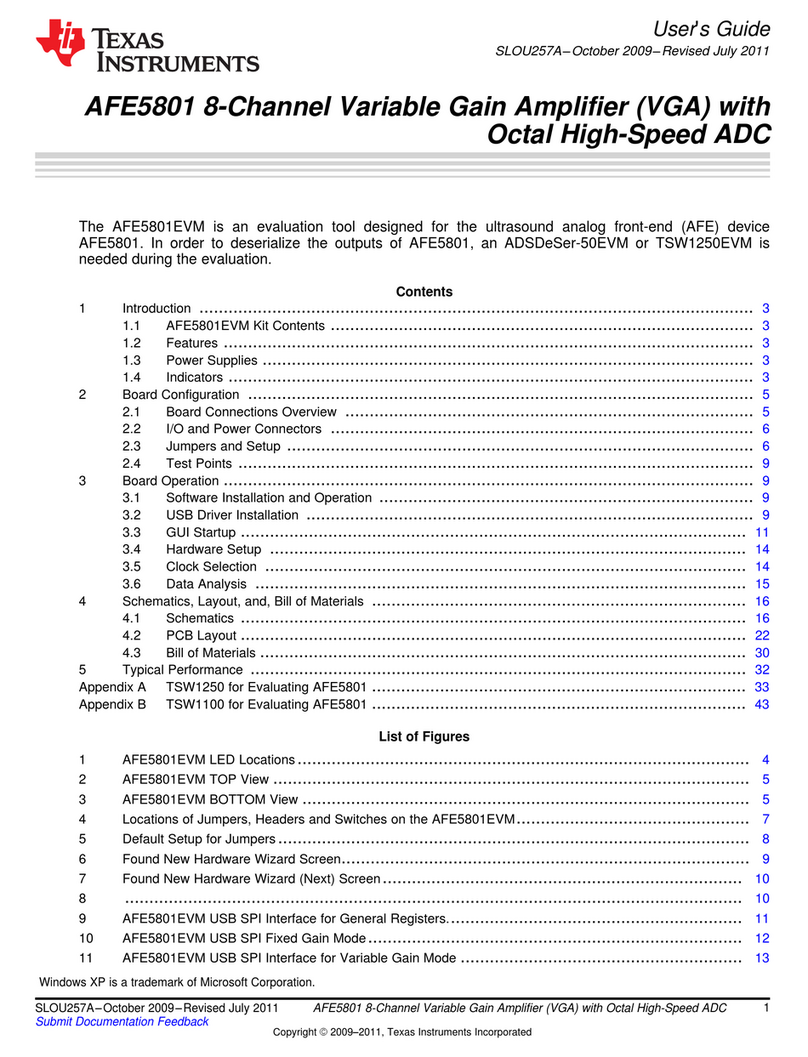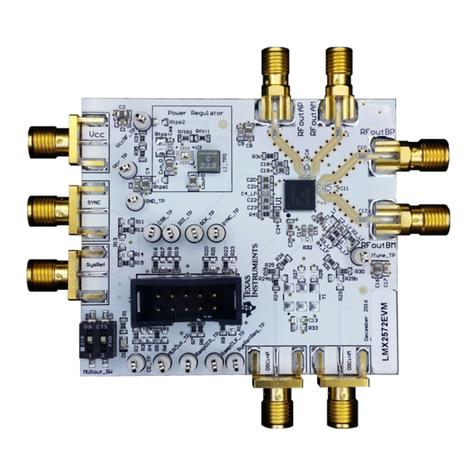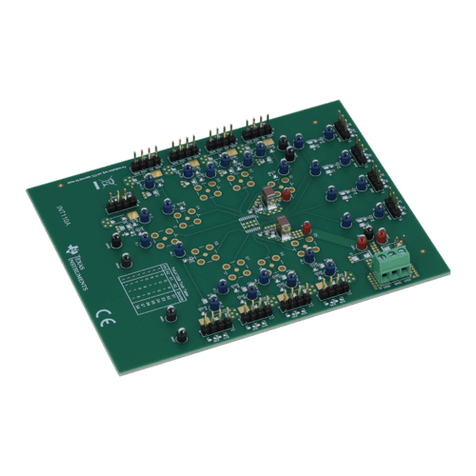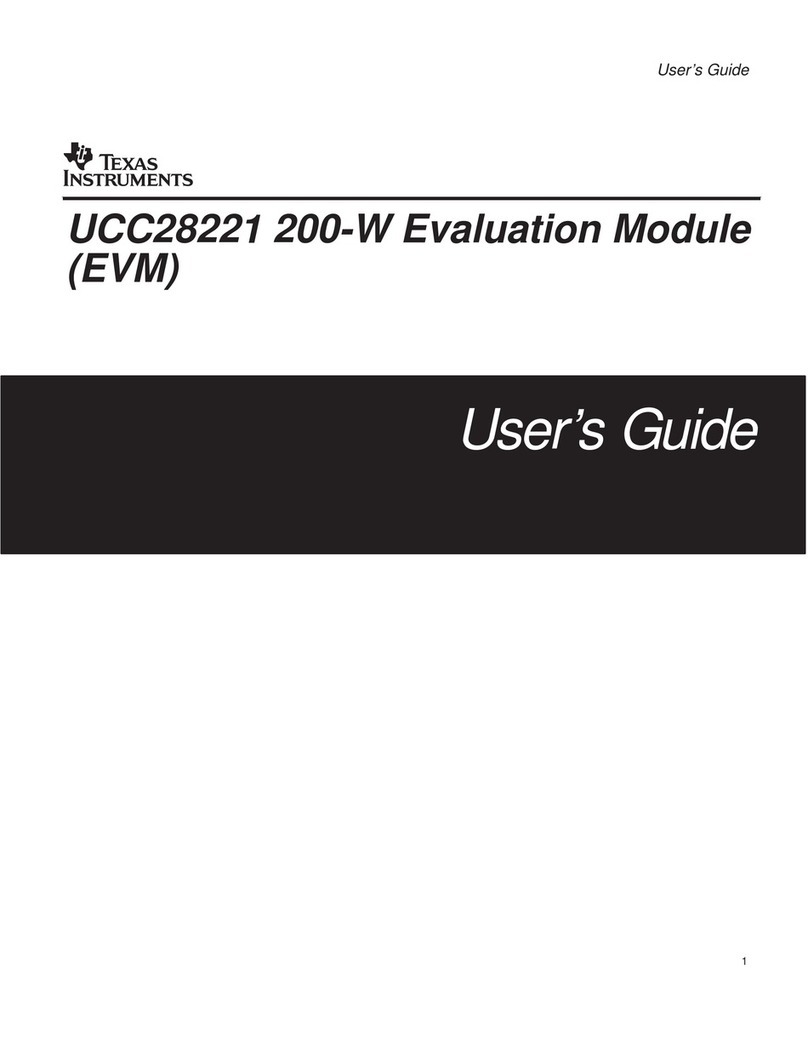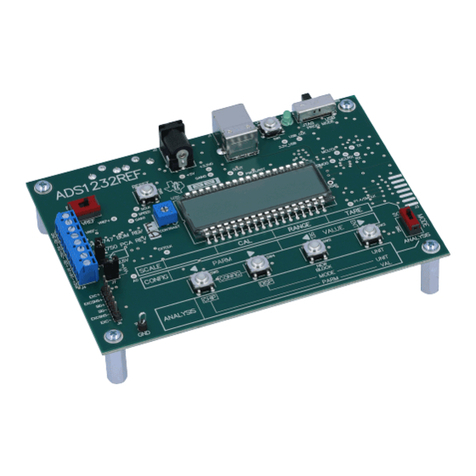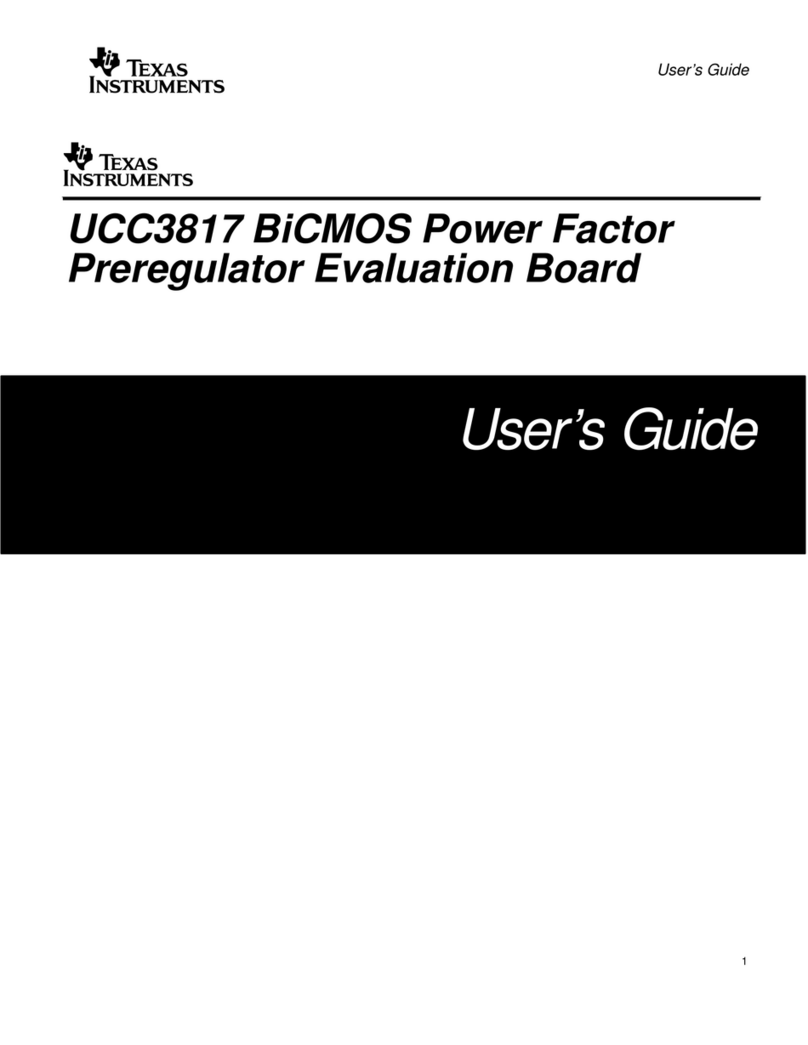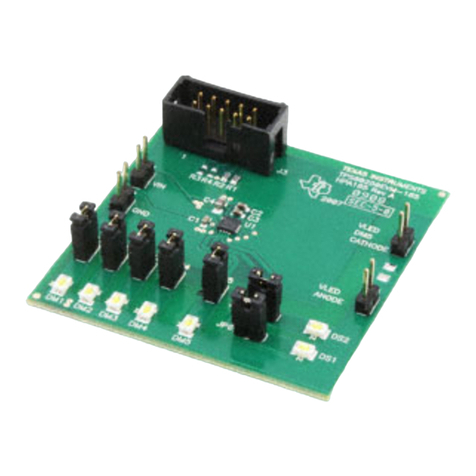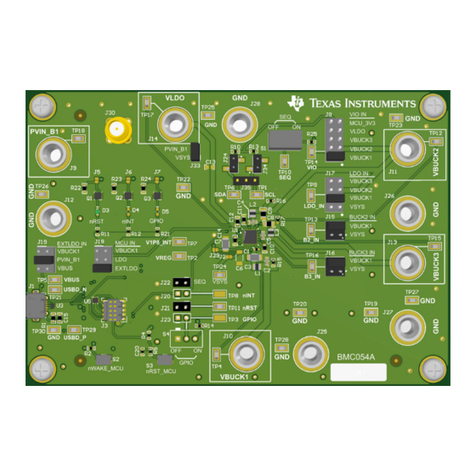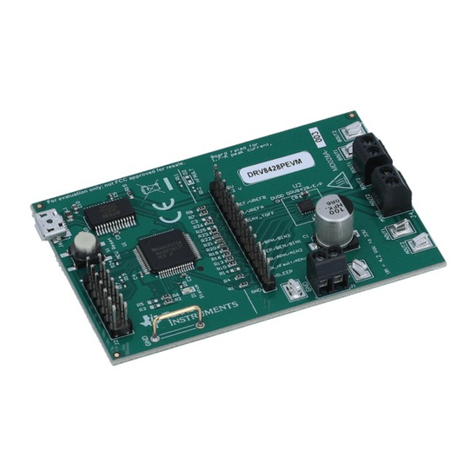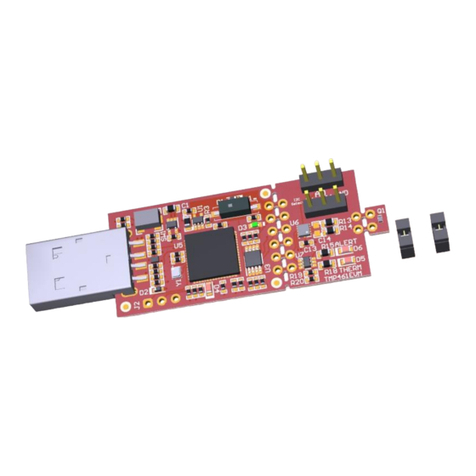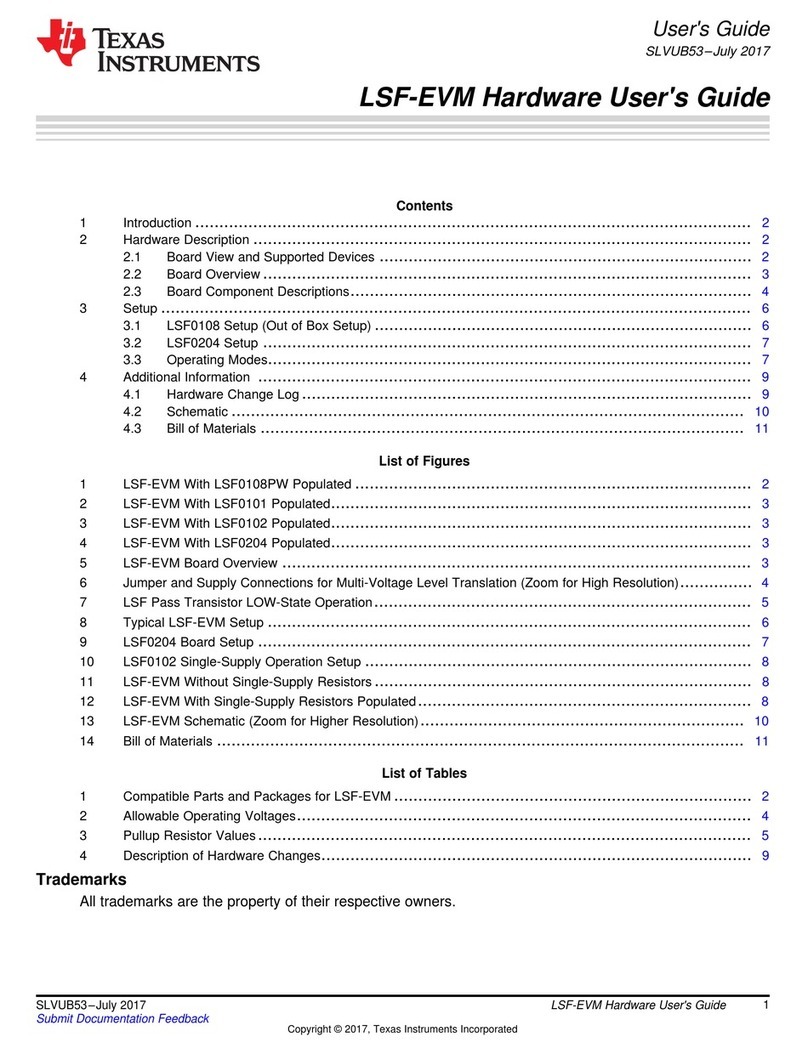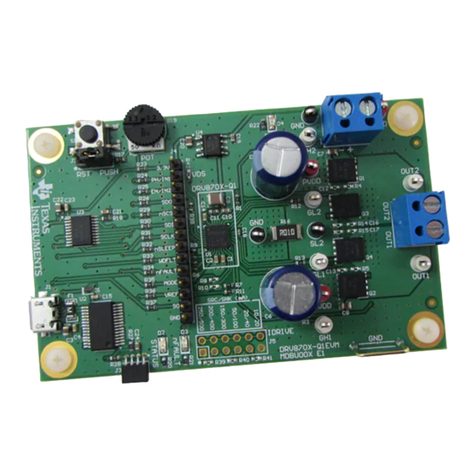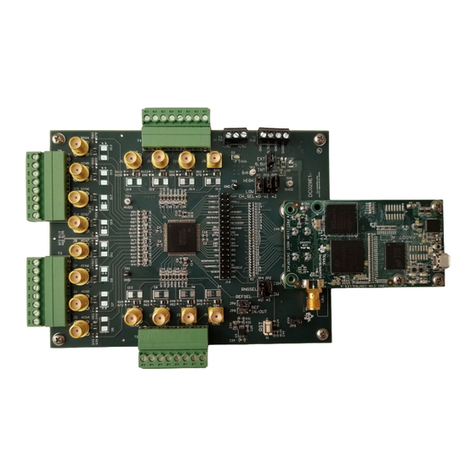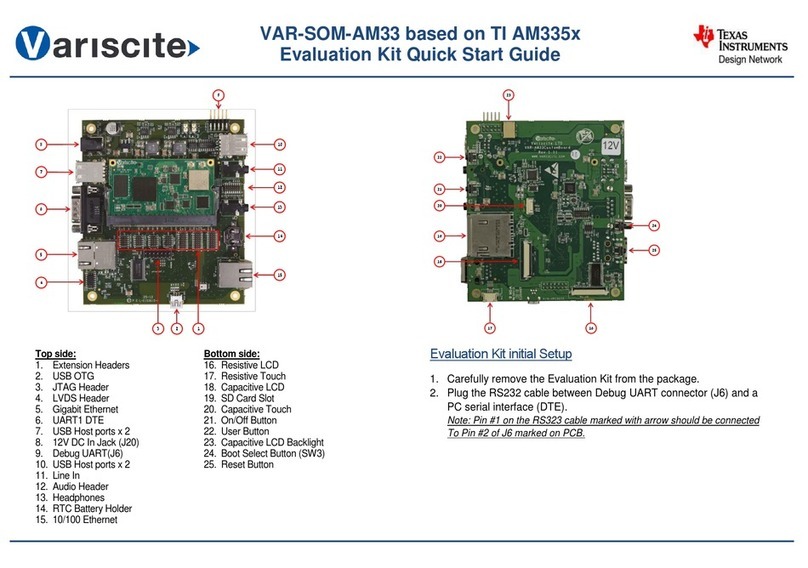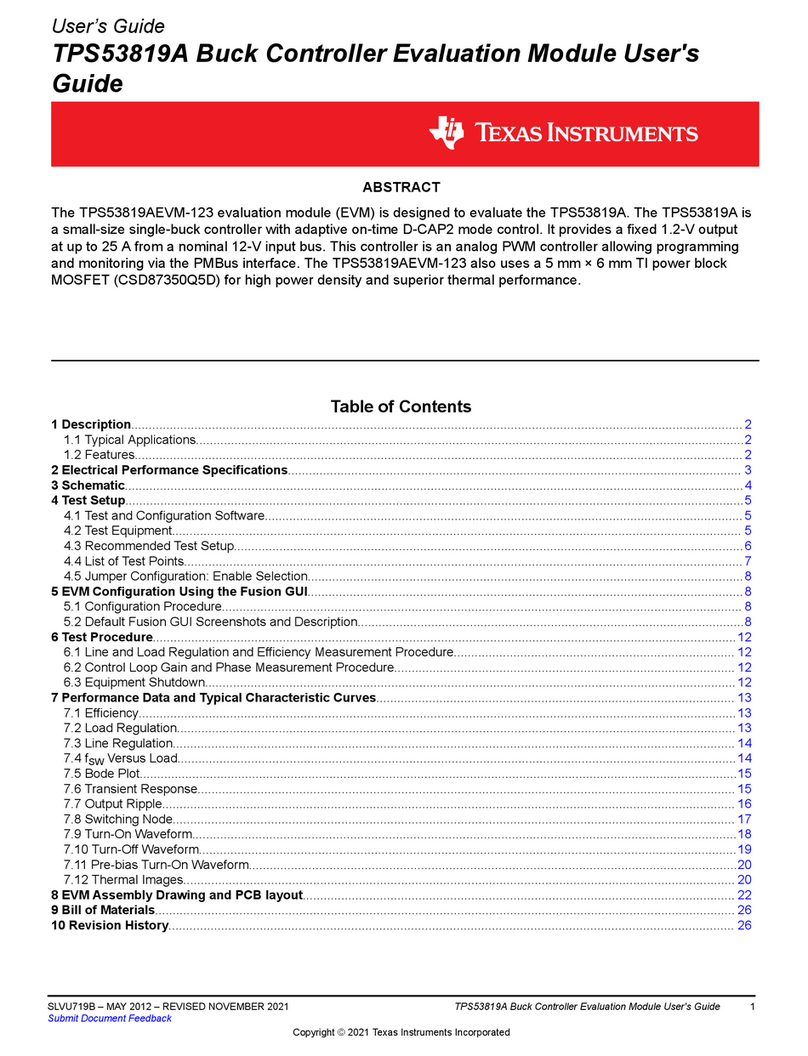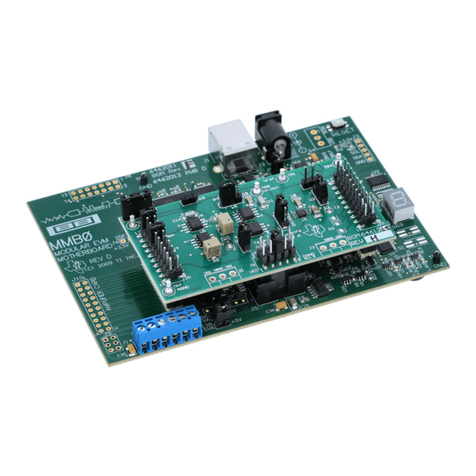
TPS65800/810/820/825 Charger and Power-Management Evaluation Module
www.ti.com
1 TPS65800/810/820/825 Charger and Power-Management Evaluation Module
1.1 Background
The TPS65800/810/820/825 is designed to provide, in a single monolithic IC, flexible charge and system
power-path management for a USB-port and AC-adapter supply; as well as multiple power supply outputs,
and a number of value-added circuit options to supply an integrated solution for applications powered by
one Li-ion or Li-polymer cell, and requiring multiple voltage rails. The TPS65800/810/820/825 features two
highly efficient, step-down converters targeted at providing the core voltage, and peripheral I/O rails in a
processor-based system. Both converters enter a low-power mode at light load for maximum efficiency
across the widest possible range of load currents. The TPS65800/810/820/825 also integrates a boost-
type LED driver, six LDO regulators (five programmable and one fixed), one programmable SIM interface
LDO, and an integrated backup block for a battery/rechargeable capacitor. The TPS65800/810/820/825
powers the system while independently charging the battery. This feature reduces the charge and
discharge cycles on the battery and allows for proper charge termination and system operation with an
absent or defective battery pack. The system can instantaneously turn on using an external power source
in the case of a deeply discharged battery pack. The TPS65800/810/820/825 automatically selects the
USB port or the AC adapter as the power source for the system. In the USB configuration, the host can
select from the two preset charge rates of 100 mA and 500 mA. The TPS65800/810/820/825 dynamically
adjusts the USB charge rate based on system load to stay within the 100-mA or 500-mA charge rates. In
the AC-adapter configuration, an external resistor sets the magnitude of the charge current. The
TPS65800/810/820/825 charges the battery in three phases: conditioning, constant current, and constant
voltage. Charge is terminated based on minimum current. An internal charge timer provides a backup
safety for charge termination. The TPS65800/810/820/825 automatically re-starts the charge if the battery
voltage falls below an internal threshold.
The TPS65800/810/820/825 also features an 8-channel (2 external), 10-bit, successive-approximation A/D
converter with external trigger capabilities performing single, multiple, and continuous readings; and,
returning maximum, minimum, or continuous average values. It also has three programmable general-
purpose input output (GPIO) ports . GPIO3 is programmed by default as a trigger for the A/D converter.
Two general-purpose PWM drivers and an RGB driver, with programmable current, are also included to
provide a highly integrated solution suitable for hand-held and other portable applications.
The TPS65810 is similar to the TPS65800, but has a few changes as follows:
1. The switcher and LDO outputs may have different default values and may be enabled or disabled
differently. See Table 1 for differences.
2. The USB boot up is disabled, and ISET2 defaults to high (500-mA current limit level).
3. The charger defaults to off.
4. The TS current bias is turned off, so external biasing is required to create a battery temperature
feedback voltage.
5. I2C and read state of GPIO1/2/3.
6. Hot Reset reloads register defaults values and internal pullup resistor on HOT_RESET removed
(external resistor is on EVM).
7. I2C machine reads interrupt fix.
8. SM1/2 default enable control changed from GPIO1 and I2C to GPIO1 or I2C.
The TPS65820 is based on the TPS65800 with a few changes. See the application report SLVA248 for
the differences among the TPS65800/810/820. The most noticeable difference is on power up, the
CE bit is set for battery-only operation. To operate off the AC adapter input, the AC, USB, or the 2.75-A
maximium option has to be selected.
2TPS658xxEVM Integrated Single-Cell, Lithium-Ion Battery- and Power- SLVU154B–March 2006–Revised October 2013
Management IC With I2C, LED Drives, Two Synchronous Buck, Boost, and Submit Documentation Feedback
Copyright © 2006–2013, Texas Instruments Incorporated
Multiple LDOs
